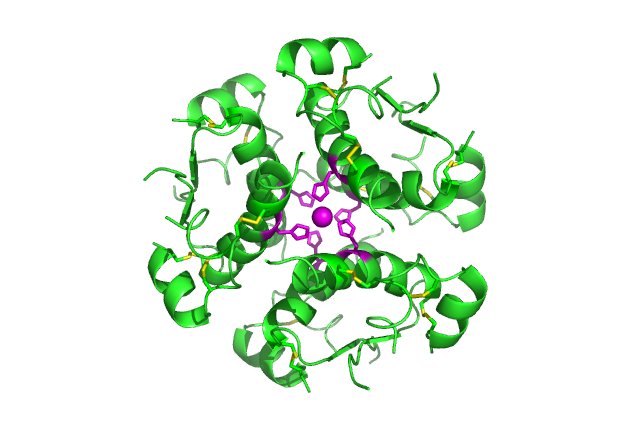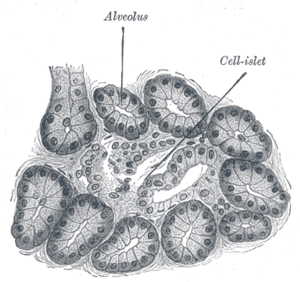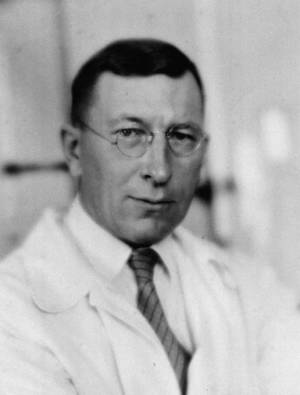This Week in Science History - Available Insulin
Interview with
This week in science history saw, in 1923, purified extracts of the hormone insulin being made widely available for the treatment of diabetes.
 Diabetes is a syndrome that causes high levels of sugar to build up in the blood, either because the body does not produce enough insulin, or it is resistant to its effects. Type 1, where the body does not produce insulin, is often diagnosed in childhood and leaves the sufferer reliant on insulin injections. Type 2, known as insulin resistant diabetes, often occurs later in life and can be controlled by dietary changes and exercise.
Diabetes is a syndrome that causes high levels of sugar to build up in the blood, either because the body does not produce enough insulin, or it is resistant to its effects. Type 1, where the body does not produce insulin, is often diagnosed in childhood and leaves the sufferer reliant on insulin injections. Type 2, known as insulin resistant diabetes, often occurs later in life and can be controlled by dietary changes and exercise.
After a meal, increased levels of sugar in the blood stimulate cells in the Islets of Langerhans in the pancreas to release insulin, which travels in the blood and stimulates tissues in the body, such as the liver and muscles to take up the sugar (glucose) from the blood, and convert it into glycogen to be stored until needed. If the sugar isn't removed from the blood and absorbed by surrounding tissues, it can cause symptoms such as excessive thirst, hunger and urination, as well as fatigue, male impotence, and in serious cases, ketoacidosis (where the body starts to beak down fats and proteins, producing chemicals that make the blood more acidic), reduced cognitive function and coma.
 Up until the 20th century, diabetes was pretty much a death sentence, with children and teenagers slipping into hyperglycaemic comas caused by the high levels of sugar in their blood, and never waking up.
Up until the 20th century, diabetes was pretty much a death sentence, with children and teenagers slipping into hyperglycaemic comas caused by the high levels of sugar in their blood, and never waking up.
The first to discover that diabetes was linked to the pancreas was a Polish-German man called Oscar Minkowski in 1889. In experiments where they removed the pancreas of dogs, Minkowski and his colleagues found that there was sugar in the dogs' urine, meaning it hadn't been removed from the blood before passing through the kidneys. In 1901 a man named Eugene Opie showed that it was in fact the Islets of Langerhans within the pancreas that were involved, named after Paul Langerhans, the medical student that first described them. Further experiments during the late 19th century attempted to isolate whatever it was that was produced by the Islets that could regulate levels of sugar in the blood and so treat diabetes.
The major breakthrough came in the early 1920s, when the Canadian Frederick Banting and his colleagues, working in Scotland, found that dogs with their pancreas removed showed diabetes-like symptoms, and that these symptoms were prevented by injecting a purified extract from the pancreas. They called the extract isletin, what we would now call insulin.
 Banting returned to Toronto, Canada, and rather than continuing to use dogs, he began to use foetal calf pancreas for the extracts as the digestive areas of the organs would not have developed and made extracting the isletin easier.
Banting returned to Toronto, Canada, and rather than continuing to use dogs, he began to use foetal calf pancreas for the extracts as the digestive areas of the organs would not have developed and made extracting the isletin easier.
In 1922, the group were able to create an extract of the isletin that was pure enough to inject into patients without having major side effects. They injected an entire ward of comatose children, surrounded by their grieving families, and by the time they reached the end of the ward, the first ones were already awaking from their comas.
By November 1922, the Pharmaceutical company Eli Lilly and Company, who had been working with the group, had made a breakthrough in purifying the extract and they were able to produce large enough quantities that it became available in April the following year.
The two leaders of the Canadian research team working on diabetes that led to the discovery of insulin won the Nobel Prize for Physiology or Medicine in 1923 for their work. Unfortunately, the Romanian scientist Paulescu, who had isolated insulin in 1921, was never credited for his work.
Insulin extracted from animal sources was the only form of insulin available until the developments in genetic engineering in the 1970s and 80s allowed human insulin to be produced by engineering bacteria. 'Recombinant' human insulin is now the main sort used throughout the world, but the breakthrough of the 1920s saved countless lives and made a once certainly fatal disease controllable.









Comments
Add a comment